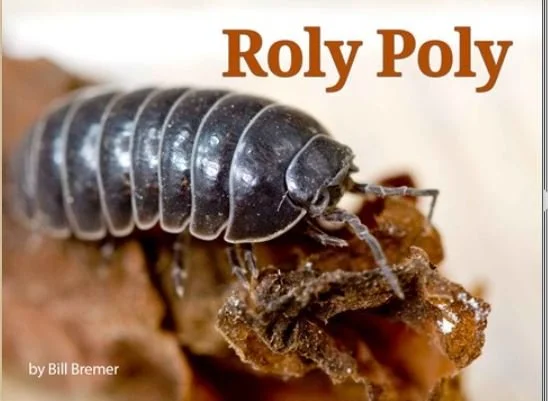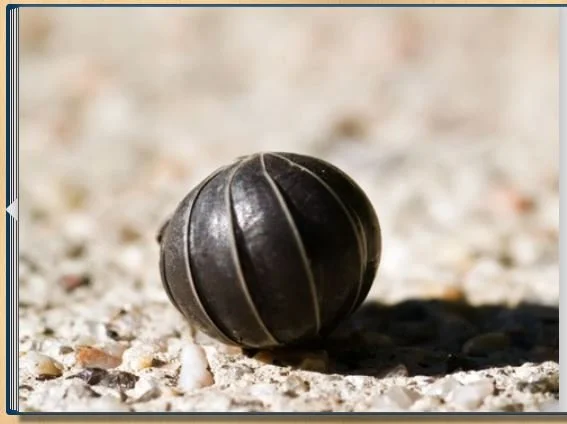Just a picture? Think again.
By Jean Anne Clyde, EdD, with Mark W.F. Condon, PhD, Unite for Literacy vice president
Six-year-old Shaun has always been a nature lover, exploring and investigating the outdoors, looking for new critters and searching for “treasures.” He already has an impressive rock collection and can tell you more than you might want to know about each of them.
Since he was a toddler, Shaun’s been particularly fascinated by “roly polies,” those ubiquitous steel gray bugs we’ve all known since we were little. And today, while working alongside his dad to ready the yard for spring planting, his interest in them is rekindled.
As they begin, moving old flower pots and restacking firewood, they accidentally expose hundreds of roly polies. They look closer, full of questions. “Why are there so many roly polies here? It’s kind of wet and it’s so dark. Is this where they live? What are they eating?”
Ordinarily, they’d go to the library for answers to such questions. Shaun loves the library, and is particularly interested in nonfiction books about real people, plants and animals. As Shaun has grown, with the help of his parents or the friendly librarians he has become more independent as an inquirer, searching for resources to answer his own questions. His interest in nature has grown faster than he has.
But the library is closed today, so Shaun and his dad decide to search online for resources that might help answer their questions. That’s when they find Bill Bremer’s Roly Poly, a popular title in the Unite for Literacy free online library.
Dad and Shaun have a ritual when it comes to reading new books together. Before they read, they carefully examine the book’s pictures for clues about what the words will tell them. This Kind of “picture walk” offers readers—young and old—a sense of a book’s contents before reading a single page. “We’re like detectives,” Dad explains as Shaun smiles, “Yeah!”
Dad and Shaun have been playing this “game” for years. When Shaun was just a baby, dad would narrate the process, pointing to cover illustrations and responding to Shaun’s tiny finger pointings. Dad would talk about the title or other visuals, casually demonstrating what good readers do. Lots of the book’s vocabulary was discussed naturally as they’d make observations and share questions and predictions about the book. Over time, walking through the pictures of visually appealing books with a capable reader like dad has enriched Shaun’s sense of how to inspect and evaluate potential book choices for himself.
With each page turn of Roly Poly, the two stop and study the images and connect their observations to what they already know about the newly discovered community of roly polies in their garden.
Each photo in Bremer’s book fills a full page and some might leave the impression that these pea-sized bugs are gigantic. The cover features a close-up close up image of the bug, and when Shaun and Dad focus upon it, their shared collaboration begins.
“Hey Dad. Look how big this roly poly looks–and he’s on something gross!” Shaun notes.
“Yeah, and look at this,” Dad says, noting details of the bug itself. “It looks like he’s wearing one, two, three, four, five, six, seven, eight little helmets!”
“Maybe that’s his armor,” Shaun suggests. That theory now leads to a question: “...but why would he need armor?”
The next page shows the critter upside down, like he got flipped over, and they can see his legs. Shaun counts them. “Whoa, he’s got 14 legs!”
“That’s weird,” Dad says. “I thought insects only had six legs.”
Shaun loves the page with the roly poly in a tight ball. It reminds him of his favorite toy, one he can change from one form to another. “Look! He’s becoming a Transformer! It was a bug, now it’s a ball!”
“I wonder if there’s a predator around,” Dad says. “Maybe that’s why he rolls up.”
“Do you think he’s afraid of us?” Shaun asks.
On the next page, it looks like the roly poly’s skin is coming off, and it’s white, like a ghost. “I think he’s shedding,” Shaun says. “Maybe he outgrows his skin.”
“You outgrow your clothes, too,” Dad reminds Shaun.
All in all, their picture walk of this short book prompts these co-inquirers to wonder, to speculate and ask eight thought-provoking questions. In fact, all of this actually enriches their reading before it even begins. And their conversation is completely authentic, with Dad learning right alongside his 6-year-old.
As they read the book, their reading confirms a lot of their predictions--their guesses. And lots of their questions are answered, but now they have new questions.
Right off the bat, they learn that a roly poly is not an insect (it has way too many legs). It’s a crustacean, but what’s a crustacean? And roly polies have gills for breathing, like fish do, but they don’t live underwater, so why do they need gills? They also learn that a roly poly is actually called a pillbug, because when it rolls up in a ball it looks a bit like a pill.
Now that they have new questions, they are primed to look for other books on roly polies. Picture walks can provide precisely the inspiration for a new reader to be drawn further into the wonders and power of literacy where a lifetime of language and learning awaits.


